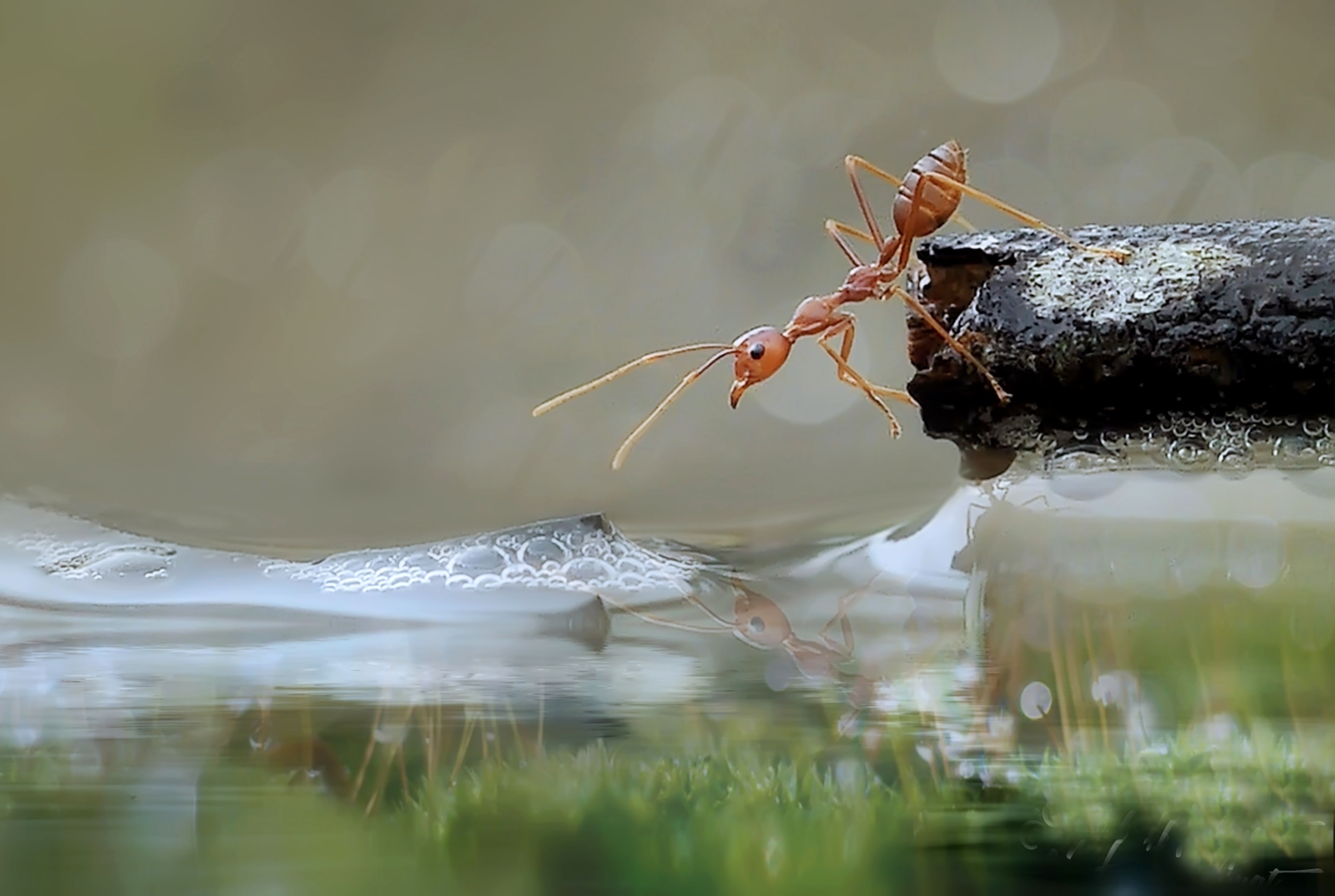Ocnus.Net
The Strange Mechanics of Fire Ant Rafts
By Manasee Wagh, Popular Mechanics. Sep 16, 2022
Sep 20, 2022 - 3:33:27 PM
When it rains, fire ants can navigate floods and flowing water by morphing into a floating raft. It’s the same principle that sticks Cheerios together in your cereal bowl.
- Scientists found that 10 or more fire ants can stick together to build a life-saving raft in floods.
- Fewer than 10 ants can’t form a stable raft because the “Cheerios effect” of fluid dynamics isn’t enough for so few struggling ants.
- This effect can be used to engineer nanoparticles for biofluid emulsions, and the ant movements can inform the design of swarming microrobots.
How many ants does it take to build a raft?
This sounds like a riddle, and in a way, it is. Scientists whose interests in insects and fluid mechanics intersect have been wondering how fire ants stick together in water. When
In fact, fire ants don’t seek to clump together in water. Instead, they try to shove each other away. But research from the Georgia Institute of Technology in Atlanta, over the past few years may have an answer to the riddle. When 10 or more ants are close together in water, a property of surface tension called the “Cheerios effect” pushes them
This odd situation, described by the researchers in the fall 2021 issue of
APS Division of Fluid Dynamics, doesn’t just apply to the fire ant species
Solenopsis invicta from the wetlands of Brazil. If you’re a fan of Cheerios, you may notice that individual cereal pieces tend to stick together in the bowl of milk. Even other objects, such as paper clips, stick together, as long as they can float. Cheerios—and ants—are less dense than water, so they are buoyant.
If you looked at your cereal with a magnifying glass, you’d notice that milk around each piece forms an upward slope, compared to the flatness of the rest of the liquid. This “meniscus effect” causes the liquid to adhere in a u-shape to the object floating in it, because the liquid molecules are more strongly attracted to the solids’ edges than to each other. Cheerios, ants, and paper clips all get pushed slightly upwards to the high point of the meniscus. Pretty quickly, they end up finding mutual high points together on the invisible film of surface tension that holds the top layer of water molecules together. This is how the Cheerios effect pulls ants and other small floating objects together.
Fire ants in the Georgia Tech experiments start forming a raft thanks to the “Cheerios effect.”
André Magyar courtesy of Georgia Institute of Technology
“I thought that when two ants encounter each other on the water surface, they would actively attach to each other,” the paper’s first author, Hungtang Ko tells Popular Mechanics in an email. Ko, a mechanical and aerospace engineer at Princeton University, worked on the fire ant raft studies with mechanical engineering professor David Hu while completing his PhD at Georgia Tech. “However, it seems that the interaction time is too short for them to realize that they are next to a neighbor. So they ended up kicking each out of the way!”
It’s fortunate that the Cheerios effect forces the ants to stay together. Hu’s team floated different numbers of ants in a tank of circulating water. “We observe ants swim in random directions even when around neighbors and kick each other away when coming into contact,” the authors write. “These repulsive effects result in the breakup of small rafts.” But when 10 ants were in the water at once, they could link up and remain stable.
Previously, researchers studying the “ant raft” phenomenon thought that ants were actively cooperating to save the colony. Many kinds of animals elect to work together to accomplish complex tasks without a clear leader. Members of the fire ant species Solenopsis invicta, which are found in both South America and subtropical regions of the U.S., work together to form encampments of hundreds of thousands of ants, often reaching over 30 bodies high. When they encounter relatively tall structures such as grass, they likewise create towers of ants that anchor to the vegetation while they float.
This content is imported from youTube. You may be able to find the same content in another format, or you may be able to find more information, at their web site.
Ants Ingenious Survival Method During Flood | Superswarm | BBC Earth
Hu has been investigating fire ant rafts for years. These ants regularly assemble “ladders, chains, walls, and rafts, composed exclusively of individual ants linked together” to survive floods, according to one of Hu’s earlier papers on ant rafts from 2011. “The raft is one of the longest-lasting structures, allowing ants to sail upon it for months as they migrate and colonize new lands.”
In their experiments, flowing water created the most pressure at the leading edge of the raft, where ants encountered the flow directly. Ants at the trailing end of the raft felt the least amount of pressure. To compensate, the raft continually changed shape so all the ants could stick together, and no one ant had to bear the main brunt of the oncoming stream. Hu’s research team found in similar experiments, published in Biology Open in February 2022, that rafting ants consumed almost 43 percent more energy than ants on dry land. But the larger the raft, the less energy an individual ant had to consume.
Source: Ocnus.net 2022
